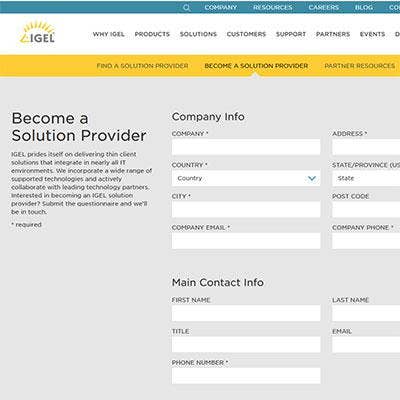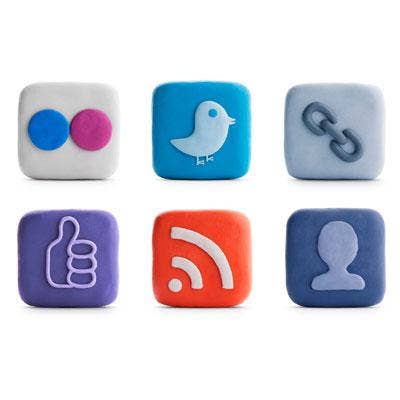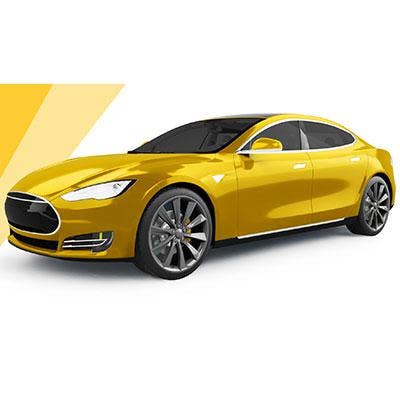CRN Exclusive: IGEL North America CEO Ayres On Beating HP And Dell, Digital Marketing And A 'Breakthrough' Tesla Giveaway

Changing The Marketing Game
A little more than one year since becoming president and CEO for IGEL North America, Jed Ayres – a 20-year marketing veteran who also serves as global CMO for the Bremen, Germany-based vendor – is rewriting the script when it comes to IGEL's place in the US market.
Under Ayres, IGEL has begun centering its efforts around an innovative software-defined thin-client solution that can be easily managed from a single control point. Via converter software or an award-winning thumb drive known as the UD Pocket, customers can boot to IGEL's Linux-based operating system and potentially save millions in hardware-replacement costs.
With Ayres leading the software charge, IGEL's US software sales were up 95 percent in 2016 and a whopping 522 percent in the first quarter of 2017.
In support of its bold software and thin-client push, IGEL has relied upon an aggressive marketing strategy that has utilized digital marketing tactics, strategic hires and an inventive Tesla giveaway promotional campaign designed to generate more leads and significantly boost brand exposure as the company tells its story.

What sort of progress have you made over the past year when it comes to IGEL's positioning in the US market?
For 20 years this company sort of flew under the radar, especially in the US, relative to its prowess from a software perspective. Part of the challenge was all the marketing being done in German. Given that English is the universal language that technology is absorbed in across every country, it was a challenge. One of the breakthroughs we had was we decided to invert the story. Instead of leading with this very technical, product-centric, feature-function, German-engineering spec marketing, we turned it upside down. We said, 'We start with the software and this operating system and the ability to manage that.' That’s been the remarkable change.

IGEL also opened an office in San Francisco. How did that affect your business efforts?
All of a sudden the company started to have visibility with all these important partners that we work with in (Silicon) Valley. Intel, AMD, Citrix, VMWare, Microsoft, Amazon, et cetera. Instead of being way out in northern Germany, a company that used to be called on by the German auxiliary offices of these big technology companies, all of a sudden IGEL is sitting in their backyards. That had a big impact.

In which areas has IGEL invested as you aim to really tell this software-defined story effectively?
We invested in the channel. We invested in giving the channel better leads. We invested in telling a better message. We invested in people. We’ve grown the team 250 percent. When I got here there was about 12 people. There’s now 37. We also built out the technical team and an inside sales team. In San Francisco, we have an inside selling team, which is very important to the marketing. We do all these events – we’re doing 30 events (with partners) in the US in June – and when those leads come in, this team of inside salespeople is ready to activate on them. They’re cultivating them and managing the top-of-the-funnel lead stuff.

How important is digital marketing for partners in the cloud era?
Most partners have limited marketing departments. They don’t put a lot of investment there. It’s a sad fact. Digital has been incredibly important. I don’t think people always have the skill sets to do some of this stuff. It all starts with the message and getting those codified, and then building those into robust campaigns. One of the problems with historical channel marketing and technology marketing is we just do a lot of events, and we hope somebody’s going to have a good conversation along the way and that it’ll translate into a lead and sale.

What are some of the ways IGEL is leveraging digital marketing?
We’re spending a lot of money on SEO along with the web site. Trying to do adwords and get our rankings up higher on the web site. We re-did the web site, which was a big deal. It's now much lighter and easier to consume. The web site was literally 8,500 pages, and we got it down to like 100 pages. But the most important thing we did is, now you can actually download the software from the web site. You get three free licenses. Probably 30-50 people will go to the site daily and download the licenses, and they get a 90-day trial.

How many downloads have you gotten since redesigning the web site?
We've had about 3,000 downloads of the software. Those are 3,000 leads we weren’t getting before. That’s a big deal for us. When I got here the guys told me, 'We can beat HP and Dell, but our problem is we have to get more people exposed to this management console.' The most amazing sale for us happens if we can get in front of the guy who has to manage all these devices. We show him this very simple, powerful (IGEL management console) pane of glass and they compare it to what they have from Dell or HP. They’re like, 'Holy Cow.' And you don’t have to buy a bunch of new equipment. You can run this secure software very effectively on existing hardware.

What about your content and social media marketing strategies? Have they helped IGEL increase its visibility?
We have a very aggressive PR, AR and social strategy aimed at making ourselves look bigger than we. The PR agency uses pay-for-performance. We have specific categories we’re targeting: earned articles, case studies, awards, press releases. The first six months I was here, we did 241 pieces of content. In the first quarter this year: 231 pieces of content. We put that into a tool called EveryoneSocial. Our partners and our employees get an email twice a week with all this content laid out very nicely for them. They’ve already federated their social tools to it. They can press one button and (the platform) sends it out in a perfectly curated post.

Have partners been able to benefit from all of this content?
As we build our assets and our content, we try to extend that to our partners. At Synergy, two of our partners, MTM (Technologies) and Entisys360 – they were going to make an announcement around desktop-as-a-service with our product baked into it – so we did press releases, blogs, podcasts, videos, case studies. We worked with them and used our resources. We also let them come into our booth and present in a theater. We’re always channel-first, partner-led. Anything we do from a marketing perspective, we try to figure out how do we take that email and turn it into something they can use?

You've said that IGEL is 100 percent-focused on the channel. How else are you trying to empower partners from a marketing perspective?
Citrix built this little suitcase that will demo all of Citrix’s products. It’s what they use behind the curtain at all their big trade shows to run their demos. It’s $5,000 to build this bag out. We’re going to buy one of these bags for each one of our (17) platinum partners, and we customize them so that they have an IGEL thin client and a UD product in there. When they boot that up, it comes up with all their co-branded (partner) splash-screens. We spent $100,000 to equip all these Citrix/IGEL partners with the most sophisticated data center in a bag. And they don’t have to keep it up. Citrix manages all the technology for the demo bag.

You mentioned investing in personnel and growing your team by 250 percent. Are there any recent hires that have especially paid off for IGEL?
Doug Brown (pictured), who is well-known in Europe and in the US, I did a podcast with him and he ended up becoming an employee. He’s been extremely visible for the last 20 years. He has his own blog and web site. He has sort of got a cult following. This is a guy who would speak at VMWorld. He’s a very sought-after public speaker. When he joined the team, that was a big deal. He’s the Global Technology Evangelist. He basically travels around the world telling the IGEL story. He already had a big following on social media. This guy is a luminary in the space. That gave us an opportunity to tell the software-driven story the way we wanted it to be told.

What have been your biggest challenges in changing customer perception of IGEL?
The biggest problem we have as a manufacturer is that we fund a lot of events. We have to somehow get the registration data from those events and then activate on it. By the time some of that data makes its way back into the system and someone makes a phone call or email on that, weeks, months could go by. And then it’s somebody they don’t even know saying 'Hey, remember IGEL? We want to talk to you about our thin-clients.' They may be completely out of context or someone they didn’t talk to.

How have you sought to address that problem?
In the spirit of software-defined, after we built the new web site, we thought 'What if we gave something away that was really outrageous?' Something that is also software-defined, gets better over time, that is the safest and smartest – some of the messages we are professing. When we saw the Tesla P100D, the car that goes the farthest and the fastest, we’re like, 'Let’s see if we can figure out how to do this.'

So how does this Tesla campaign work?
At VMworld (Aug. 30), we’re going to put this car out there as an incentive to get people to fill this survey out and then specifically give us some information about where they are in the buying journey, what kind of products do they have in their environment. And then they agree at the end of the survey to two two-hour windows on a specific day and time for an IGEL meeting. That data goes directly into our CRM. (Participants) have to enter a code before they get access to the survey. So there’s a little urgency. The inside sales team gets a notification in their dashboard when someone fills out the survey. Instead of struggling to get a meeting, they just send them an Outlook calendar request that says, 'Here’s our meeting.'

And how much does the car cost?
The value we put on it is $145,000. Part of the challenge of figuring out how to do this in 26 countries is we realized with that cost, we’re not paying taxes, title and other ancillary things. We’re basically wiring $145,000 into a bank account on Aug. 31 after VMworld. There may be people that can’t pay the taxes on this. We’ll also include the option to just wire $100,000 to you.

How many people have registered for Tesla and gone through the demo?
We've gotten about 2,500 end-user leads. They have to be IT decision-makers at viable companies. We have some fine print in the thing. When I got here they told me, ’If we can expose people to this that are in the right frame of mind and we show them our software – they’ve suffered behind the solutions from Dell or HP – all it takes is five minutes and they say, 'I’d dream of doing this with a Dell or HP product.' It’s definitely helped our pipeline and visibility. Just the number of people who’ve been exposed to it is huge.

With this logjam you're now able to overcome, how big of a breakthrough has this Tesla campaign been for IGEL?
It’s so big that it’s a problem for me after August 30. What are we going to do to top this? Once we give the thing away, how are we going to keep this train going? It’s going to be a challenge. It’s been a breakthrough for us as far as exposing IGEL. The challenge was that only 5 percent of the people looking at thin-client technologies were considering IGEL, because they’d just never heard of us before.

How do you continue exposing potential new customers to IGEL software and thin-clients?
One of the easiest things we do, we tell them come to this office, bring an old device you don’t care about that you want to convert. It’s like bring-your-own device lunch. It literally costs us $100 in sandwiches. They walk in, we convert the device, and then if they’re on the wireless network, they can be enrolled in the management solution. Up on the screen, we can demonstrate the policy management software right before their eyes. Andy Whiteside (founder of Xentegra, an IGEL partner) pioneered this idea. He’s now doing it over a webinar.

How have people reacted to the demos?
We’ve had people get up out of their chair, walk out, cancel orders they had with Dell that were pending. We’ve had people ask the rep and the SEs to come back to the office with them to embark on a proof of concept with the technology. If you’re immersed in the competitor’s solutions and see what we do… It’s like a hands-on thing. And they see it in real-time. And if they come they can enroll in the Tesla (program).